Want to build an impressive pair of arms? Great. Get a pair of dumbbells for dumbbell curls. Then, find a bar and bang out some chin-ups. Also, you should probably do several sets of wrist curls for your forearms. Oh, and don’t forget your farmer’s carries for grip strength.
You can perform all those exercises … or you can hit up the reverse biceps curl and get it all done at once. This singular exercise is uniquely effective for developing your biceps, forearms, and grip strength simultaneously.
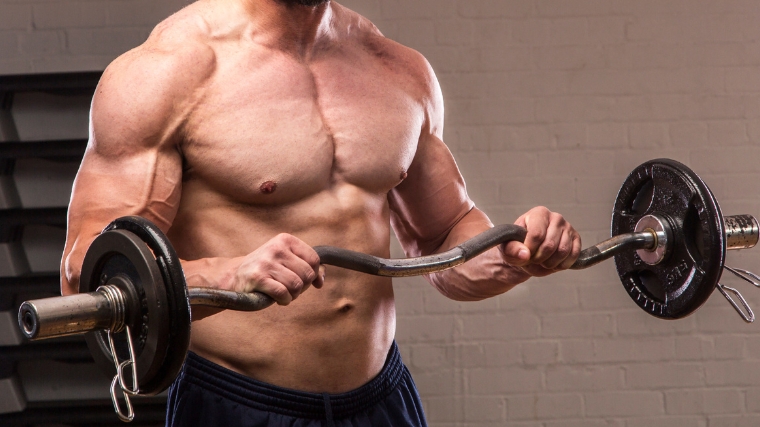
Here’s how to do absolutely flawless reverse biceps curls. Plus, some viable alternatives, tips and tricks, and a whole lot more.
- How to Do the Reverse Biceps Curl
- Reverse Biceps Curl Sets and Reps
- Common Reverse Biceps Curl Mistakes
- Reverse Biceps Curl Variations
- Reverse Biceps Curl Alternatives
- Muscles Worked by the Reverse Biceps Curl
- Benefits of the Reverse Biceps Curl
- Who Should Do the Reverse Biceps Curl
- Frequently Asked Questions
How to Do the Reverse Biceps Curl
Like most other curls, you can perform the reverse biceps curl with a barbell, dumbbells, a loadable cambered bar, or even cables. For the purposes of this guide, you’ll be learning the reverse biceps curl with a standard barbell.
That said, rest assured that the majority of technical instructions and cues apply just fine, no matter your implement of choice.
Step 1 — Grip and Stand
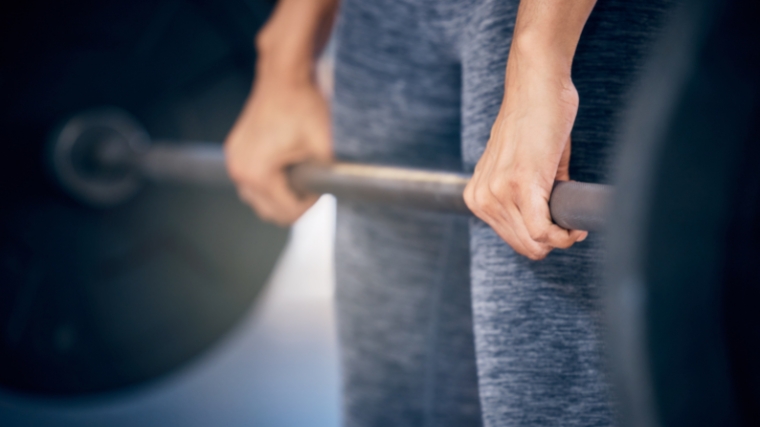
Grab an empty or lightly-loaded barbell and hold it against your thighs with a shoulder-width, double-overhand grip; your palms should be pointing behind you, and your knuckles should point at the floor.
Stand upright with a stable, hip-width stance, gaze fixed forward. Keep your upper arms tucked snugly against the sides of your torso.
Coach’s Tip: If you experience discomfort in your wrists or elbows, try unwrapping your thumbs and squeezing the bar only with your fingers.
Step 2 — Curl and Squeeze
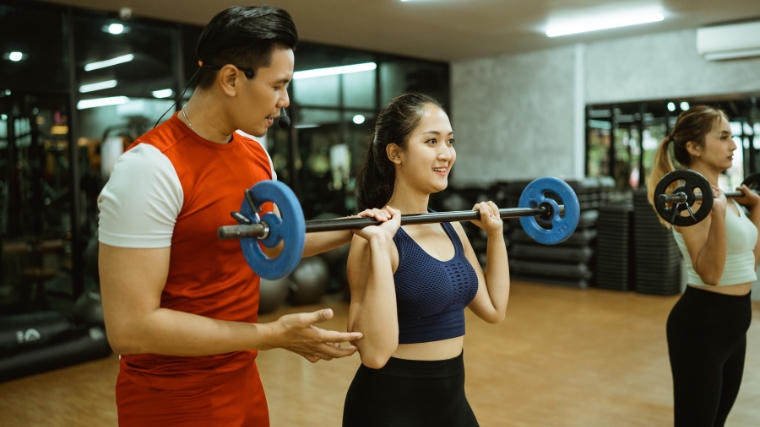
Initiate the curl by contracting your biceps and bending your elbows. Raise your forearm upward as high as you can without allowing your upper arm to move. Squeeze at the top for a beat, and then lower the weight back down slowly.
Coach’s Tip: You can take a very slight forward lean with your torso if you experience discomfort in your shoulders.
Reverse Biceps Curl Sets and Reps
The reverse curl is a fantastic total-arm builder, but you can program it to satisfy a variety of different fitness goals as well. Here are three different ways to tackle the exercise, depending on your specific goals:
- For Beginners: Keep it simple with 2 to 3 sets of 10 reps with a moderate weight.
- To Grow Muscle: Go for 3 to 4 sets of 6 to 8 reps with a heavy, but doable, weight.
- For Endurance: Try 2 sets of as many reps as possible in 30 seconds.
Common Reverse Biceps Curl Mistakes
Before you plug the reverse biceps curl into your next arm workout, you should be cognizant of potential errors so you can avoid committing them. The exercise takes a bit of finesse to really master, despite how simplistic it may appear at a glance. Steer clear of these issues.
Lifting too Heavily
As a single-joint isolation exercise, the reverse biceps curl doesn’t require a lot of weight to make use of. Furthermore, while the lift is perfectly safe, it may aggravate your wrists or elbows if you load up on weight before you’re ready.
Instead, start conservatively and train with higher repetitions per set to make up for the reduced load. That way, you can acclimate to the stress of the exercise and master the technique before you slap on extra weight.
Using Momentum
Like with any curl, too much unintended “body English” — that’s using the momentum from swinging your hips or torso — can ruin what would otherwise be a very productive set of reverse biceps curls.
If you find yourself tempted to sway back and forth to lift the weight up, you’re probably going too heavy. Drop back a bit on the load and keep yourself rigid and tight so you can focus on using only your arms to lift.
Not Accommodating Your Grip
The reverse curl is a fantastic exercise for your biceps, forearms, and grip. That said, the standard barbell may be too cumbersome or uncomfortable to work with. While barbells are great for sheer loadability, this quality isn’t necessarily as relevant for a small isolation exercise.
So, if the barbell isn’t working, explore your other options instead. You may prefer to use a cambered bar with a bent shaft if it’s more enjoyable to grip, or just go for the dumbbell rack instead.
Reverse Biceps Curl Variations
The reverse biceps curl isn’t as modifiable as some other exercises. You can still make some small adjustments to your equipment, setup, or execution, though, to change things up. Try out one of these variations:
Fat Gripz Reverse Biceps Curl
If you’re performing the reverse biceps curl primarily to enhance your grip, you can artificially thicken the shaft or handle of whatever implement you’re using with a pair of Fat Gripz. These rubber clips attach to the handle of any bar, creating a larger handle for you to grip.
This makes it that much harder to hold onto the bar while you curl. It will also likely limit the amount of weight you need to use to tax your grip. In lieu of Fat Gripz, you can also wrap two towels around the bar as well.
Cable Reverse Biceps Curl
To emphasize your upper arms and forearms with the reverse biceps curl, head for the cable tree instead. Cables apply consistent mechanical tension to the target muscle, meaning your arms work just as hard at the top of the reverse curl as at the bottom.
Moreover, working with cables allows you to experiment with all the different attachments at your disposal. You can usually find a straight bar, a cambered bar, or a rope attachment to work with in most gyms.
Dumbbell Reverse Biceps Curl
If you’re a gymgoer who values comfort above all else, you might want to work with dumbbells if you do the reverse biceps curl. Dumbbells afford you the most freedom of movement at the elbow and shoulder joints, and also let you work each of your arms independently.
https://www.youtube.com/embed/rV2asdIdXF0
This means you can identify, target, and attack potential imbalances in strength or size before they escalate out of control. Dumbbells also earn points for convenience; simply grab them off the rack and start curling.
Reverse Biceps Curl Alternatives
It may be the case that the reverse biceps curl simply isn’t your cup of tea. It could aggravate your joints, you might not have a good mind-muscle connection, or you simply don’t like the movement.
That doesn’t mean comprehensive arm gains are off the table altogether. Look toward one of these alternatives instead:
Hammer Curl
The hammer curl works just about all of the same muscles as the reverse biceps curl. The main difference involves how you position your wrists and what equipment you work with.
Instead of using a barbell with your hands pronated, you generally perform hammer curls with dumbbells or, in some cases, a rope attachment fixed to a low cable pulley. This alteration to your grip removes a great deal of the stress on the wrist joint and is a flexible alternative to the reverse curl itself.
Zottman Curl
If you’re in the market for a truly unique biceps curl variation, give Zottmans a go. The Zottman curl combines a run-of-the-mill biceps curl with the forearm-torching stimulation of a reverse curl.
To perform Zottmans, you’ll curl a pair of dumbbells regularly, with your palms facing upward. Then, at the top of the motion, rotate your wrists around and lower the weight with a pronated grip. This adjustment puts the impetus on your forearms and wrists to stabilize the weight as you lower it down.
Wide-Grip Barbell Row
Curls are all well and good, but you can stimulate your biceps, forearms, and grip just fine with compound lifts as well. If you’re strapped for time, you can modify the standard barbell row to better involve those muscles.
Take a wide grip and row with your elbows flared. For an added bonus, unwrap your thumbs and squeeze the bar as tight as you can with just your fingers. You should find that these muscles become the limiting factor well before your back gives out.
Pull-Up
The tried-and-true pull-up is also a great option for stimulating your arms: Simply by virtue of having to hold onto the bar itself while you suspend your body’s weight.
Pull-ups offer a tremendous assortment of other athletic benefits as well. So, to kill several birds with one stone, get good at pull-ups and you’ll find some solid arm and forearm gains along the way as well.
Muscles Worked by the Reverse Biceps Curl
Any isolation exercise you perform will target a select few muscles; that’s the whole idea behind single-joint training. To get the most value out of your arm workouts (whether you use the reverse biceps curl or not), you should have at least a cursory understanding of your own anatomy.
Biceps
The biceps brachii connect from your shoulder blade all the way down onto your forearm. Their primary function is to bend the elbow, such as when you perform any type of curl. The biceps also have a supporting or stabilization role during exercises like the row and even the bench press.
You’ll get some biceps engagement on the reverse curl, but their functionality will be somewhat limited by your wrist position. The biceps really shine when you curl with a supinated, palms-turned-upward wrist.
Brachialis
The brachialis sits underneath the biceps brachii on the upper arm and is actually the primary muscle that performs elbow flexion — especially if you don’t supinate your wrist. You’ll get more brachialis activation with the hammer curl than the reverse curl, (1) but the muscle still does a load of work during the reverse biceps curl as well.
Brachioradialis
The brachioradialis muscle makes up a bulk of the meaty part of your upper forearm. It’s also hugely involved in the reverse biceps curl and is why the exercise is so good for forearm growth.
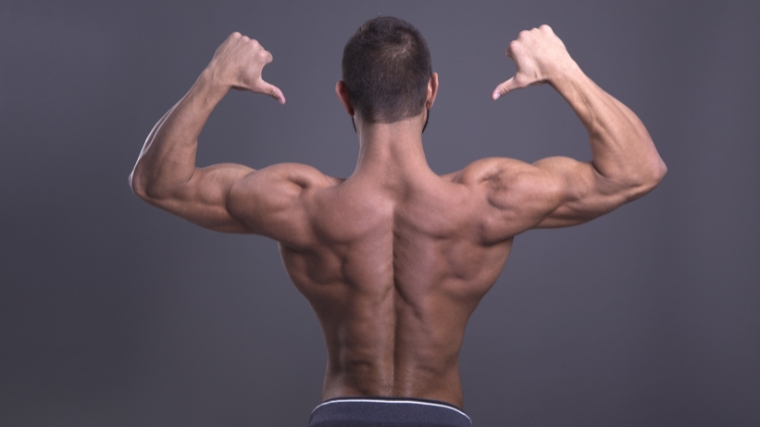
[Read More: Our Favorite Forearm Workouts, + the Best Forearm Exercises]
The reverse curl stimulates your brachioradialis more than the hammer or standard curl. (1) Any time you bend your elbow with your wrist rotated palms-down, you call your brachioradialis into action.
Benefits of the Reverse Biceps Curl
You can use the reverse biceps curl to strengthen your joints, thicken your arms, and a whole lot more. It’s even a convenient grab-and-go option for arm training. Here are some of the many benefits available to you:
Strengthens Your Wrists and Elbows
Any exercise that requires you to move a joint through a large portion of its range of motion, under an appropriate amount of load, will strengthen that joint over time. As such, the reverse biceps curl is a stellar option for bulletproofing your wrists and elbows, provided you follow a reasonable progression and don’t work with too much weight too quickly.
Great for Arm Thickness
The brachialis and brachioradialis contribute significantly to the appearance of your arms, especially when viewed from the front. If you’re after a pair of thick, impressive pythons, you really need an exercise that smashes more muscles than just your biceps. The reverse biceps curl is a stellar option to add into your arm training.
Easy to Learn and Perform
One of the best things about the reverse biceps curl is that you don’t need to spend weeks refining the technique before the exercise becomes useful to you. Make no mistake, you should still nail down the broad themes of the form, especially in your first few workouts.
After that, though, the movement is as simple as grabbing your implement of choice and going to town on your arms.
Who Should Do the Reverse Biceps Curl
Whether you’re a gym newbie or hit the weights to perform better in your chosen sport, there’s a good chance that you can make use of the reverse biceps curl.
Beginners
When you’re new to the gym, you often suffer from an embarrassment of riches you aren’t even aware of — you can make a lot of gains out of very little work, especially compared to more seasoned lifters.
You really only need one or two solid arm exercises when you’re starting out. If forearm development and arm strength are of high priority to you, you should consider making the reverse biceps curl a mainstay movement.
Bodybuilders
Bodybuilders value proportional development above all else. It’s all too easy to hammer your biceps curls and leave your forearm development wanting.
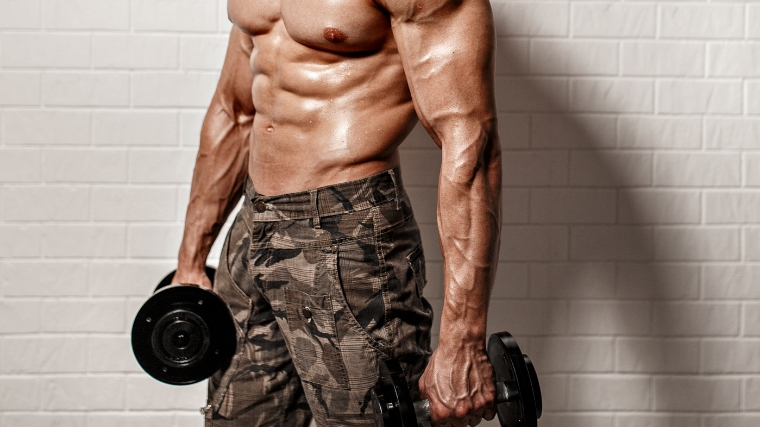
When you’re building a physique-oriented arm routine, you should have at least one exercise in there that focuses mainly on your forearms and brachialis to ensure well-rounded hypertrophy. The reverse biceps curl is a fantastic choice here.
Grapplers or Wrestlers
Any sport that has you working with your hands will require strong joints and a bone-crushing grip. Contact sports and martial arts alike rely on these qualities. So, if you partake in either, you’ll want to tailor your accessory training in the weight room toward the needs of your sport.
You can use the reverse biceps curl to strengthen the joints and ranges of motion that see the most wear and tear when you’re hitting the mats, for instance.
Get a Grip on Gains
So, if you want to build an impressive pair of arms that can crush pumpkins and tear phone books, you can put together four or five different movements to get the job done. Or, you can get really good at the reverse biceps curl and make gains that Popeye would envy.
FAQs
Reverse biceps curl got you scratching your head? No worries. Here are two common questions about the exercise, answered and unpacked.
What is a reverse biceps curl?
The “reverse” label refers to your wrist position. Standard biceps curls have you bend your elbow with your palm supinated, or facing forwards, knuckles pointing down or back.
Reverse curls require you to flip your wrists around and curl with your palms facing the floor.
What if reverse curls hurt my wrists?
You may experience some mild wrist pain as your joints adjust to the new position. If the pain persists or detracts from your ability to perform the exercise, you can substitute reverse curls out for a friendlier alternative.
References
1. Hatfield, F. (1993). Hardcore bodybuilding: a scientific approach. McGraw-Hill.
Featured Image: Carl Bennett / Shutterstock